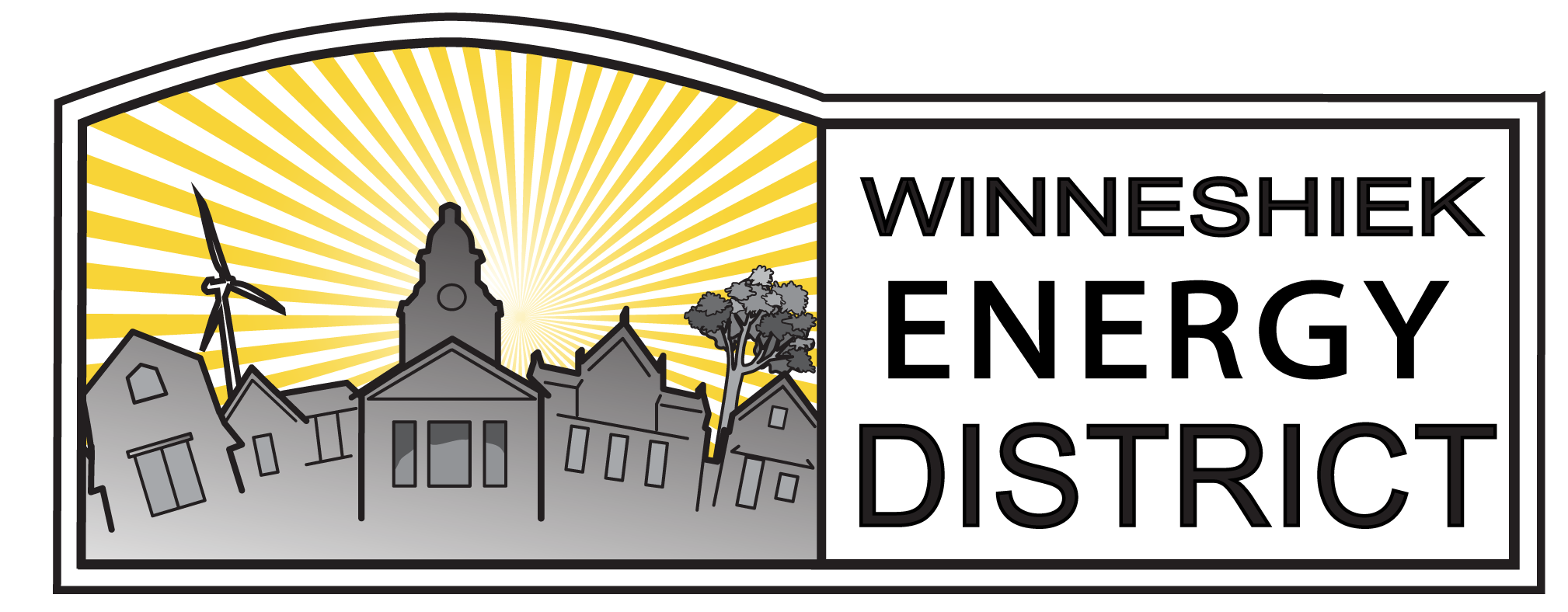Alliant Rate Case Round-up
Andy Johnson, Executive Director, Winneshiek Energy District
The Iowa Utilities Board has issued a final ruling on the recent Alliant Energy electric rate increase.
The Energy District joined the City of Decorah, Luther College, Winneshiek Medical Center, and Aase Haugen Senior Services in forming the Decorah Area Group (DAG). DAG submitted extensive testimony in opposition to the rate increase, and in support of locally-owned energy efficiency and solar rights.
DAG’s initial public statement made clear that while the overall increase is still way too high, there were clear wins, and the outcome could have been worse. We’ll overview key points in the ruling, then add brief discussion on certain issues.
Here are the highlights.
1) The Board approved the Settlement Agreement allowing Alliant to charge an additional $127 million/year in rates. The agreement lowered the total increase about 38% from Alliant’s original proposal. DAG objected to the settlement on grounds that the increase is still way too high. The base rate increase approved is roughly 15% for residential, 11% for general service/commercial, and 15% for large general service customers. Alliant claims customers will see a much smaller increase: see below, and this prior DAG response, for why that is misleading.
2) The Utilities Board severely criticized Alliant for its behavior during the Decorah municipalization campaign, saying it “failed to meet the expected standards of a regulated monopoly”, for not disclosing “further information with regard to … expected rate increases that was known prior to the municipalization vote”, and declared “The lack of transparency and misrepresentation in the Decorah municipalization vote is of significant concern to the Board.” (See the “Management Efficiency” discussion in the Board’s Final Order, pp 97-106, for more.)
3) Major victories were achieved in protecting solar owning customers from discriminatory tariffs and fees:
–For smaller customers (homes and businesses on net metering), the board fully rejected the new 2-3 cent transmission fee that the company was attempting to add to every net metered kWh.
–For larger demand-billed customers (including Aase Haugen, and Luther College, which have solar, and the City of Decorah and Winneshiek Medical Center, which are considering solar), DAG testimony led to the reduction of the proposed 33% tariff increase (for large solar customers) down to roughly 13%, a massive reversal
4) The board rejected the company’s proposed $15/month fee on customers that refuse a new AMI meter (“smart” meter). They did approve a $4.06/month charge for a “non-standard” meter, which is still unreasonable, but also ordered the company to offer a “reduced-pulse AMI meter option” at no additional monthly charge for those concerned about exposure to radio frequency. Customers should watch for the Alliant notice outlining how to sign up for these options, if desired.
5) The settlement agreement included a resource planning process that would study the economic viability of a phase-out of the company’s remaining coal plants: DAG requested and the Board approved that this planning process be open to and include all parties involved in the rate case, AND the affected communities. DAG testimony emphasized the importance of community planning, and economic mitigation action, in affected communities including Lansing.
We find the final rate hike especially unjust in light of the recent 2018 rate increase, and what we believe to be a high likelihood of another rate increase filing one year from now, in 2021, a possibility the company has refused to rule out and should be pressured to clarify.
We also warn of misleading messaging from Alliant, which has stated that customers will actually see a much smaller bill impact in 2020. This relatively low bill impact in 2020 is due to two reasons:
–Alliant implemented an “interim” rate increase of roughly $90 million/year in early 2019. Customers have, therefore, already been paying about 70% of the final increase for quite some time.
–Alliant is being required to credit customers in 2020 with significant tax savings from the 2017 federal tax bill, as well as savings from the company’s exit from the Duane Arnold nuclear plant. Both of these are short-term bill reductions that will soon disappear.
Budgeting your electric bill for 2020 might not be so bad relative to what you’ve been paying recently.
Your 2021 bill, however, could see both the disappearance of these temporary credits, and (heaven forbid) another rate increase – UFF DA!
